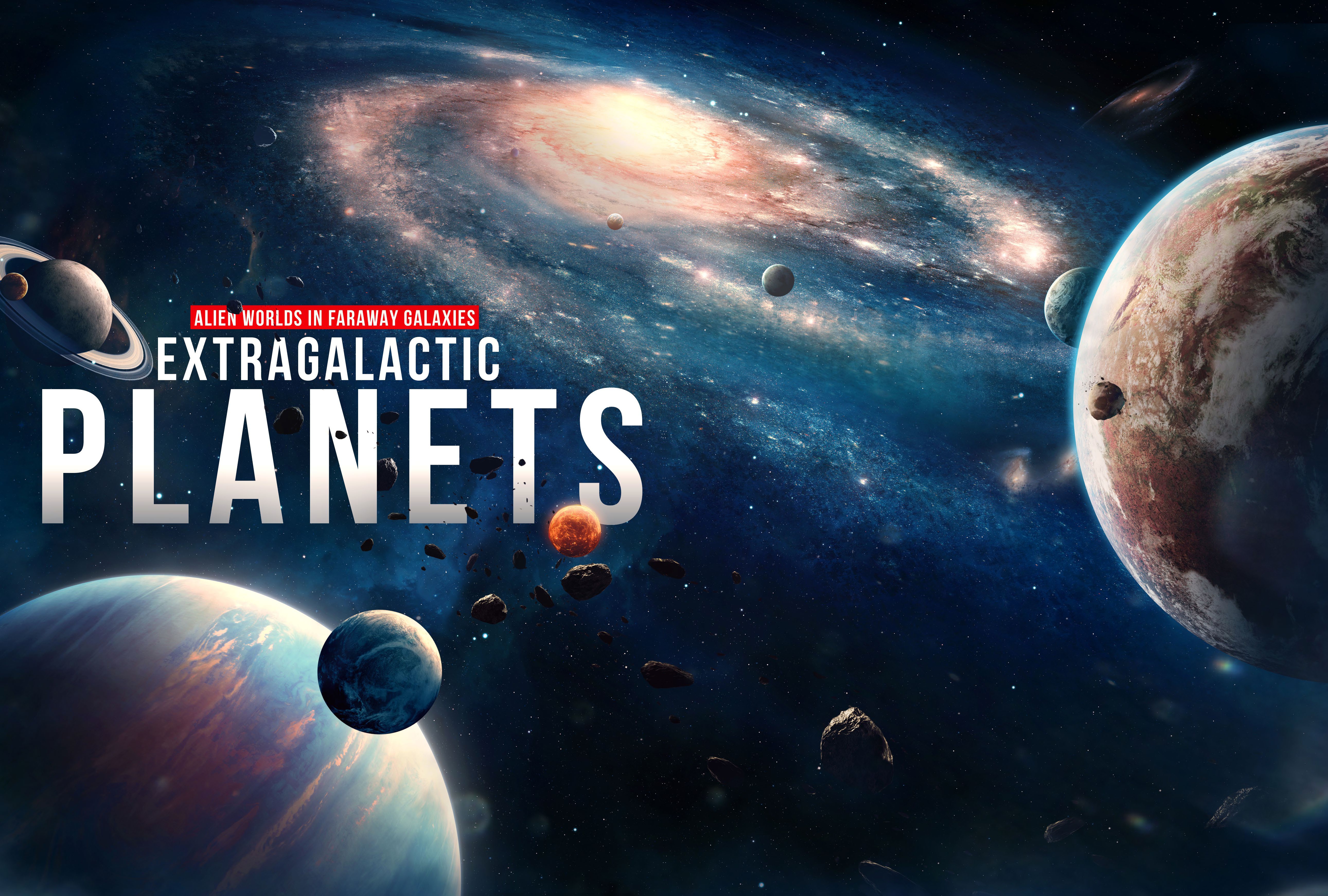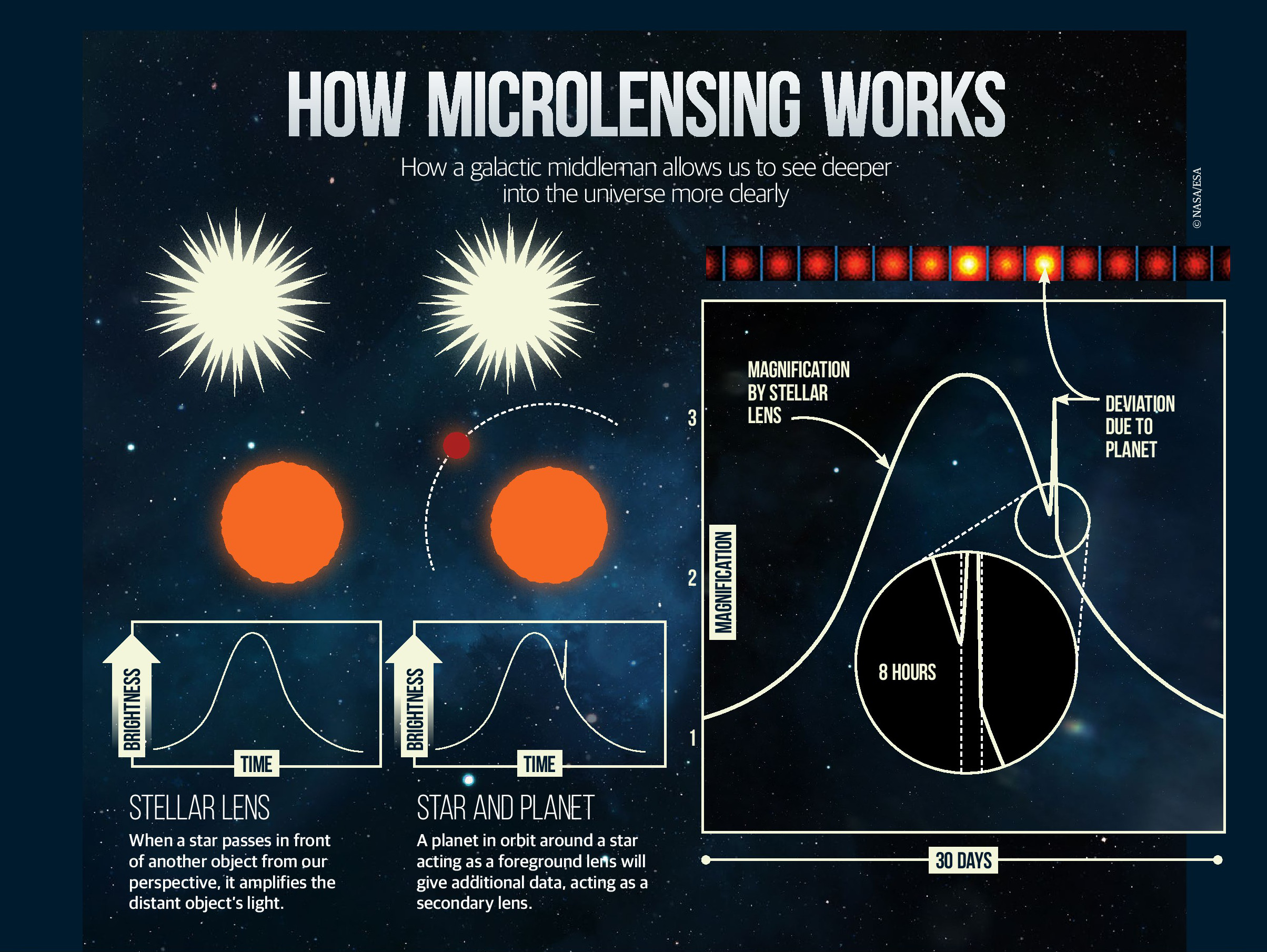EXTRAGALACTIC PLANETS
ALLIEN WORLDS IN FARAWAY GALAXIES
The search for alien worlds continues, with surprising consequences
Reported by Colin Stuart

© Tobias Roetsch
We should count ourselves lucky. For thousands of years humans have gazed up at the night sky, wondering whether or not we are alone. We are among the first generations to know for sure that our Solar System is just one of many strung out across the vast cosmos. Our discovery of around 4,000 alien worlds dancing around distant stars – known as exoplanets – over the last three decades has quite rightly been lauded. It’s a wonderful achievement that helps put us in our astronomical place. The haul has thrown up a zoo of exciting and enchanting worlds, from those that dance around two suns to planets with diamond rain, bubbling metal lava and possibly even liquid water.
Despite the accolades, these discoveries are rarely
put into their true context. It is easy to forget just
how much of the universe’s real estate remains
unexplored. All of the confirmed planets found to
date reside in our own Milky Way galaxy, and in our
tiny corner of it to boot. There are around 2 trillion
other galaxies in the observable universe. To see
how much we’ve poked around in so far, imagine
that this hoard of galaxies is represented by the
total land area of the Earth. On that scale, our Milky
Way accounts for the space taken up by the average
UK bungalow. The area that includes the thousands
of exoplanets we’ve found so far is smaller than a
sock drawer in the spare bedroom.

It’s no surprise that astronomers would love
to know more about planets beyond our current
horizons, and those outside the confines of our own
galaxy in particular. “They are so unimaginably
far away that we’re unlikely to ever be able to
reach them, but knowing about extragalactic
planets is still really useful,” says Lewis Dartnell, an astrobiologist at the University of Westminster.
“They help build up the stats we have on the
wonderful diversity of different worlds that exist.”
“ They are so unimaginably far away that we’re unlikely to ever be able to reach them”
LEWIS DARTNELL
There’s every reason to suspect that they are out
there. After all, a huge part of our understanding
of space hinges on the fact that there’s nothing
special about the part of space we occupy. This
so-called Copernican principle – named after the
Polish mathematician and astronomer Nicolaus
Copernicus – tells us that if there are planets here,
there should be planets everywhere. However,
as Dartnell says, the distances involved are
intimidating. Spotting an Earth-sized planet in
the Milky Way is hard enough – it’s the same as
trying to see an ant on the Moon. Seeing one in
our nearest major galaxy, Andromeda, is a whole
new ball game. It’s the equivalent of being able to
see a virus on the lunar surface. To photograph
one we’d need a telescope a hundred-times wider
than the entire Earth. With that clearly out of the
question for the foreseeable future, the big question
is whether there are other ways to find them.